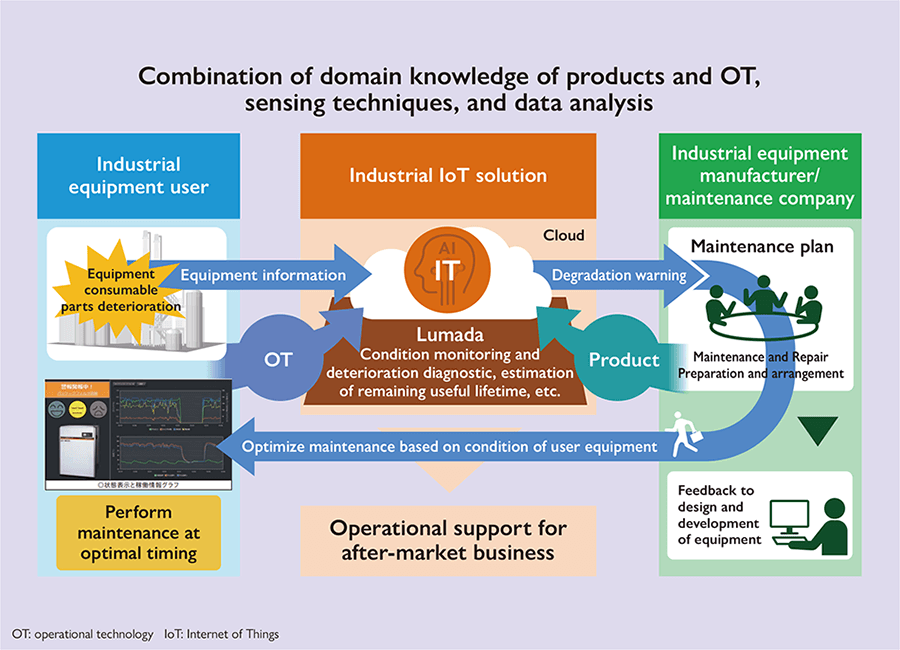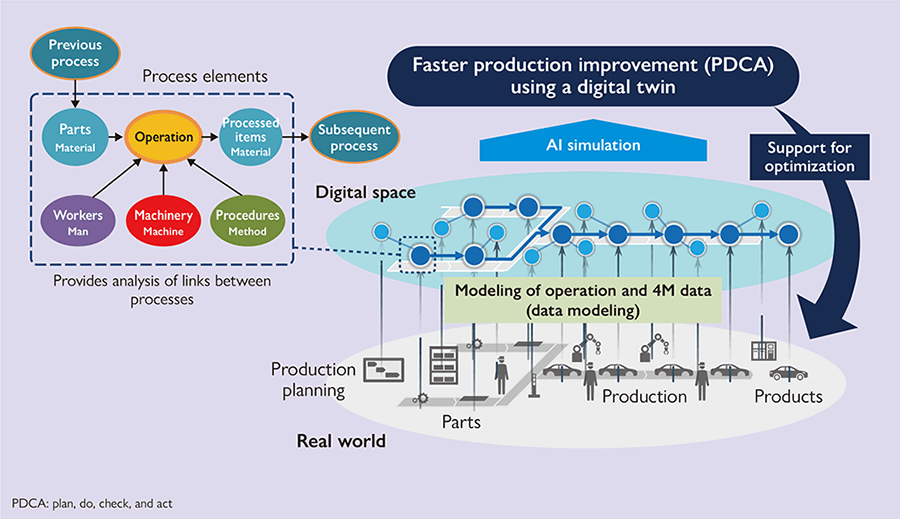1. Digital Encapsulation of Manufacturing Knowhow
While the manufacturing industry has relied on the extensive knowhow possessed by experienced staff to maintain high levels of quality and productivity, the aging of this workforce over recent years has raised concerns about how this knowledge will be passed on to others.
In response, Hitachi has developed a technique for the digital encapsulation of manufacturing knowhow so that it can be reused. This involves transforming knowhow into digital form by collecting and analyzing “man, machine, material, and method” (4M) data from the workplace.
Knowhow such as how to identify the causes of lower productivity or adjust equipment operating parameters is modeled by analyzing the causal relationships between 4M data, including worker actions and stances extracted from image data, logs and other operational information and alarms collected from equipment, and details of the materials being worked on. The modeled knowhow is available for use not only by the users who provided it but also by other users such as contract manufacturers, depending on the scope stipulated by those who provided the knowhow. In this latter case, the knowhow can be provided without the risk of it being leaked because the information contained in the model is encrypted inside the capsule.
Hitachi has developed a productivity analysis service that provides an example of how such a knowhow model is used. The service helps people to come up with improvement ideas by using the knowhow model to classify and highlight the causes of lower productivity. The service was trialed on the production line of Okuma Corporation, who partnered in the collaborative creation project, and will contribute to improving productivity across the manufacturing industry by supplying the resulting knowhow to corporate users of Okuma machine tools.
1. Functional architecture of digital encapsulation technique








